If you’ve ever watched as a cat “flipped” over fresh Catnip perhaps you’ve been struck with the question; “what causes Catnip to affect cats that way?” Catnip is indeed an unusual phenomenon among cats, it has the ability to alter your cat’s behavior like nothing else can.
So what exactly is the reason for what scientists have coined as “The Catnip Effect”?
Unfortunately for such inquisitive minds the exact reason of why Catnip affects cats in such a manner remains mostly a mystery. There is however much that we do know about Catnip and cats even if we don’t have the ultimate answer of exactly “why?” yet answered.
The Science Stuff
Catnip is scientifically classified as Nepeta cataria and is a perennial herb from the mint family and is in fact also referred to as “Catmint”. It is a plant indigenous to Europe but has been exported and is now found all over including the United States and Canada. There are about 250 species in this plant family which is popular in herb gardens and grows widely as a weed.
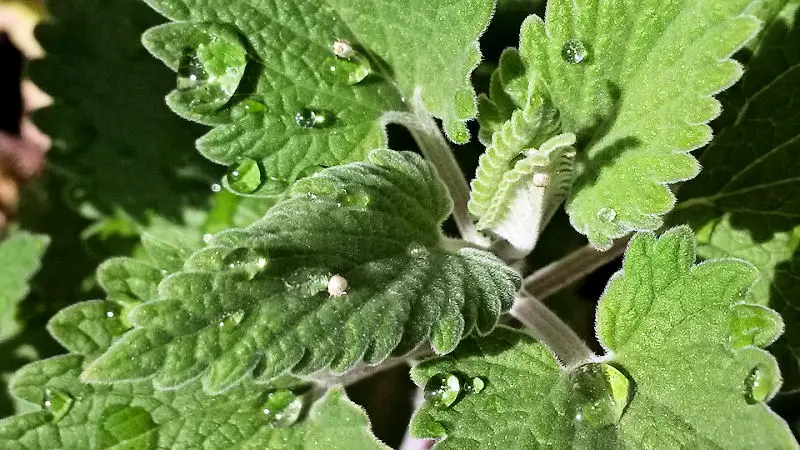
The active ingredient in Catnip is an oil; Nepetalactone, which is found in the leaves of the plant. This is the reason you are able to find Catnip in a bottle or spray form in some pet stores.
While you can’t smell it, Catnip has a unique scent to a feline. While Catnip is related to other common plants like basil, spearmint and oregano, those plants don’t have the same effect on cats.Some cats love to roll around in the Catnip and get it all over their fur. The typical cat pauses to sniff this unusual substance and maybe give it a small lick. Then they return to chew on the catnip leaves.
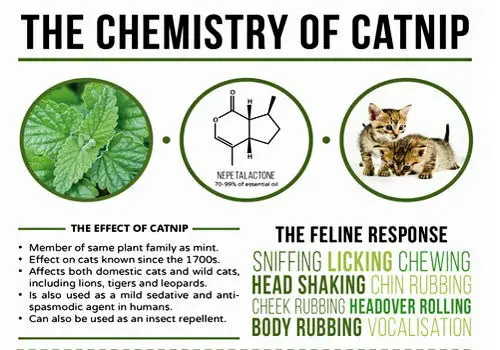
Catnip plants contain volatile oils, acids, sterols and tannins. Cats get high from a chemical in this plant called nepetalactone which binds to receptors inside a cat’s nose, stimulating sensory neurons leading into the brain. Catnip is considered to be non addictive and completely harmless to cats although the reaction can be like one too many martinis. Cats will vary in their response but it can range from wild and crazy to totally oblivious in that classic “who cares” manner that cats do so well.
Catnip and Kitty
Catnip affects approximately half of all cats. What determines whether or not a cat will react to Catnip is a genome that is inherited (or not inherited as the case may be) at birth. Kittens, regardless of whether or not they carry this genome, do not react to Catnip until reaching about 3 or 4 months of age and becoming sexually mature. Older cats are also more likely to have a diminished or non-existing reaction to Catnip, which leads scientists to believe that the Catnip effect is based at least partially on sexuality and that the reaction may be something like an aphrodisiac. Further adding to this belief is the similarity of a sexual pheromone found in the urine of the male cat to nepetalactone (the active product in Catnip).
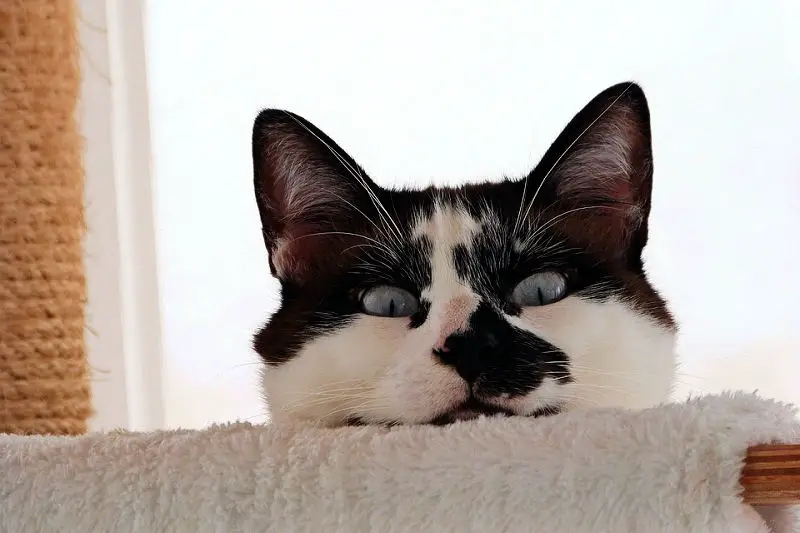
Shortly after ingesting Catnip, a cat may leap, roll, wiggle, purr and seem to freak out. The cat may even become aggressive toward another pet when under the influence of Catnip. Others may simply grin broadly and quietly savor the experience. It may even act as an aphrodisiac for some cats – causing them to become very amorous with other cats. Usually, this Catnip “trip” only lasts for just a matter of minutes. It’s rare for the reaction to last for more than an hour or two. But no matter what reaction your cat has, once the pleasure passes it’ll be about two hours before kitty responds to catnip again.
Cats that can be traced to regions where Catnip is not indigenous appear to be unaffected by Catnip. The domesticated housecat is not the only cat that may be affected by Catnip. Larger cats can also be affected by the Catnip effect, felines such as the bobcat, lynx, tiger and even lion are known to react much the same way the common housecat would. It is interesting to note that while Catnip can act as a stimulant when a cat sniffs it, it can conversely act as a relaxant if ingested. Therefore, you may see a different, nearly opposite result depending on whether your cat chooses to eat the Catnip you provide for him/her or merely sniffs it (the latter being the more typical behavior).
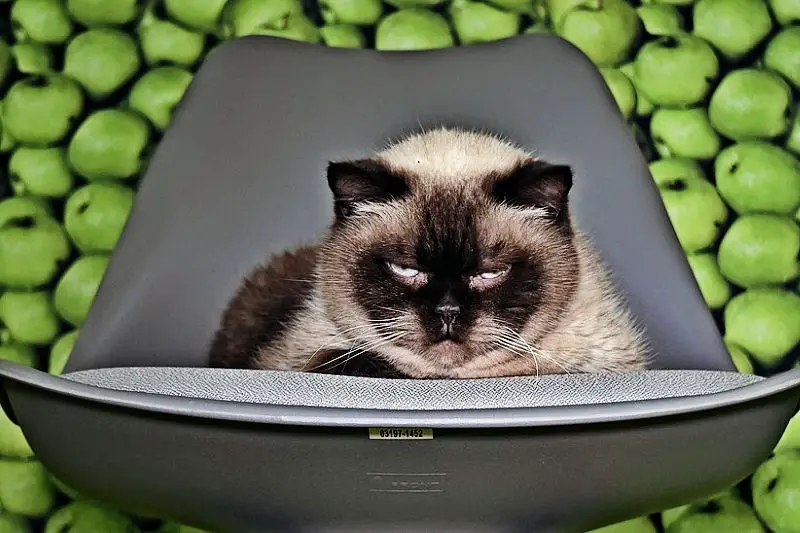
How to Use Catnip With Your Cat
Catnip can prove to be a very useful tool for a few common problems with your cat. If you are lucky enough to have a cat that does react favorably to Catnip then here are a couple of ideas for you and your furry little friend.
Catnip and Lazy Cats
Catnip can be used to get a lazy cat off his or her butt. Some cats are notoriously lazy, choosing to sleep much of their day away in a nice golden patch of sunlight on the living room carpet, only waking up to eat and gather some necessary attention from their indulgent owners. If this sounds like your cat, you may soon see (if you haven’t already) that your cat is becoming more and more round. This is generally not a good thing. Catnip may be able to help. Presenting Catnip to your cat encourages activity (of course provided the cat sniffs rather than eats the herb).
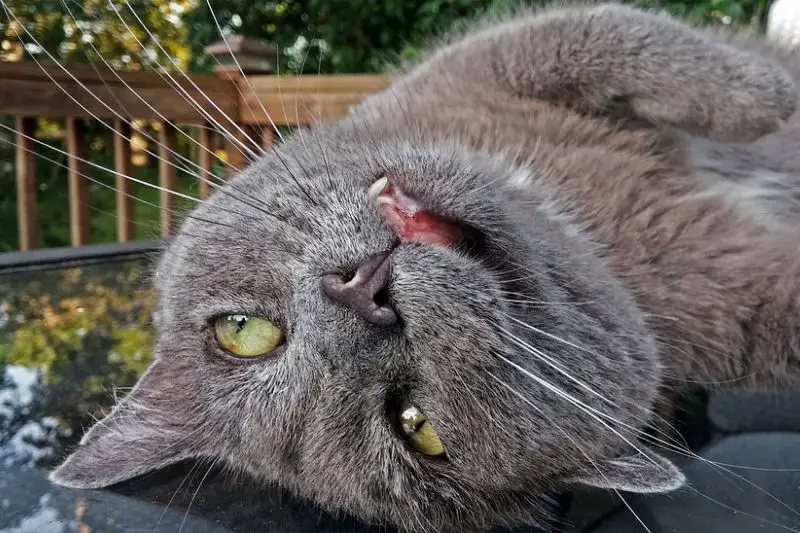
Many adult cats will respond to Catnip in a manner that resembles their childlike kitten hyperactivity, jumping, playing and running around as if it was given an injection of kitty adrenaline, which in essence, is the case. The effect of Catnip on a cat can last somewhere between two and fifteen minutes. If the latter is the case, then this is a decent amount of exercise and will help keep your cat a little more svelte than without a Catnip treatment. Furthermore, if you leave the Catnip out for a few hours then your cat may return to the herb later (an hour or two after the effect has worn off) and again react in an energetic fashion. So in this sense you may consider Catnip sort of like a kitty energy drink.
Catnip and Cats That Scratch Furniture
If you have a cat that seems bent on the destruction of your furniture then Catnip may again be able to come to the rescue. Cats can be frustratingly picky about just about anything under the sun including where they want to sharpen their furniture destroying claws. It is not uncommon for a cat to damage or destroy a piece of furniture just because the owners finally gave up on trying to redirect their cat to the unused cat scratching post that set them back anywhere up to a hundred dollars and more. A good way to attempt to change this frustrating and expensive behavior is to rub some Catnip or Catnip oil on a scratching post that you are attempting to get the cat to use. Introduce your cat to the newly “Catnipped” scratching post and see how he/she reacts. If all goes well, your cat will sniff and inspect the post and then begin clawing at it. After a few times (you may have to re-Catnip the post) hopefully kitty will be trained to use the post rather than the sofa.
Using Catnip with Multiple Cats
If you’ve never used Catnip before and you have more than one cat it is advisable to try it out individually on each cat before introducing it to all of your cats at the same time. The reason is because Catnip affects some cats in a negative manner causing the cat in question to become aggressive rather than merely playful. Introducing it to your cats individually enables you to control the situation and keep a cat that may react aggressively isolated from your other cats. This of course means avoiding a possible catfight that could result in broken furniture, hurt kitties (possibly requiring a vet visit), annoyed neighbors (and probably owners), or a combination of all of the above.
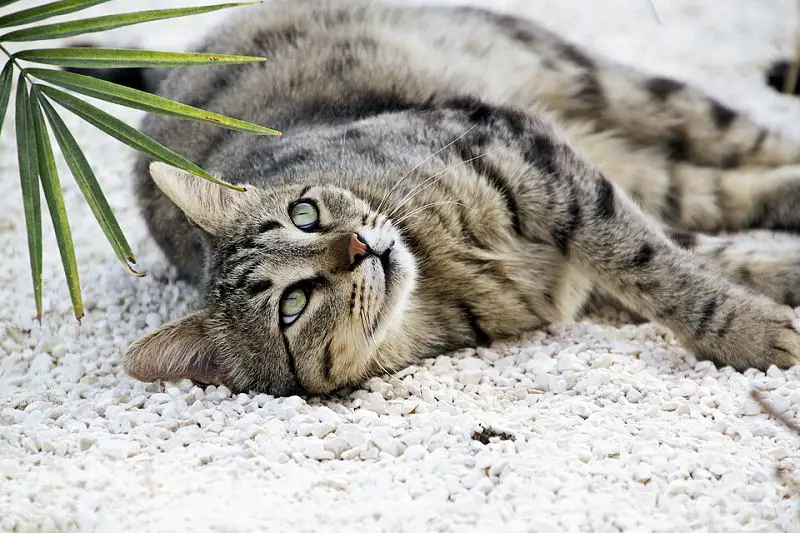
Growing and Keeping Catnip
Growing your own Catnip can be rewarding as it can save you money, give you the satisfaction of doing something yourself and ensuring that you always get fresh, high-quality Catnip for your cat. A word of caution however; the exact kitty reaction you want to grow your own Catnip is something to be wary of. If you plan on growing your Catnip out of doors and other cats can access your Catnip garden then be prepared for unwelcome feline visitors. This may not be a problem for you personally, but cats are by nature territorial and if you have a cat that lives alone without the company of other cats this could prove to be an area of stress for your cat. Even if you keep your cat inside at all times, your cat may get agitated if he/she looks out the window to see another cat frolicking in territory your cat considers his or her own.
If you choose to grow your Catnip indoors, be careful to keep it out of reach of kitty. Otherwise you’ll likely have Fluffy jumping up on furniture even to the most out of the way place to get access to the tempting herb. Cats are great jumpers and not really known for respecting precious household knick-knacks. So if you do decide to grow it indoors for a cat that reacts to Catnip, be careful to grow it in a place that your cat won’t be able to access it. A room that you always keep closed to the cat is probably the best solution for indoor grown Catnip.
If you do find that your cat reacts positively to Catnip you should be sure to use it sparingly so as not to dull the effect which can be the result of overexposure. A good rule of thumb is to not treat your kitty more than once a week on average to Catnip.
Given all the positive effects that Catnip may have on your cat you owe it to yourself (and naturally your fluffy little ball of affection) to see how he/she reacts to this strange and well known herb. It will provide enjoyment and exercise for your cat and most likely an entertaining show for yourself as well. It’s a win win situation.
Our Favorite Product Pick
We use a brand of Catnip with our own clowder that’s 100% organic … it’s called Meowijuana and comes from a company in California called Meowijuanaville. Our kitties love it!
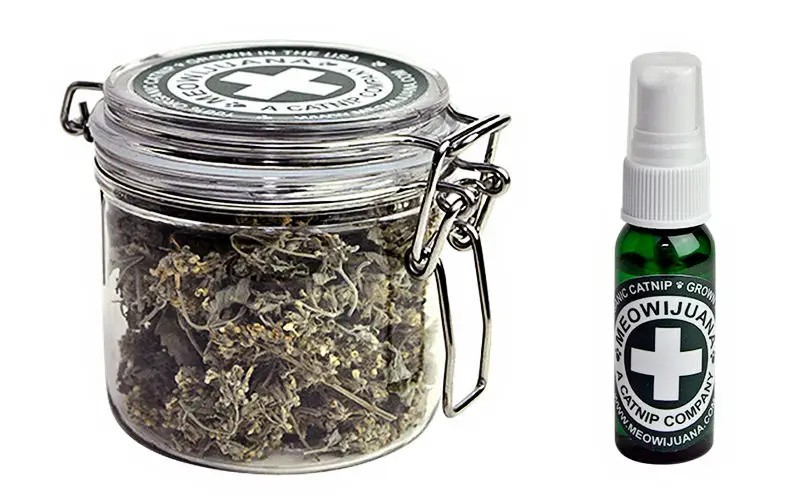
This is our ginger ninja shown here hoarding his latest stash of Meowijuana. Don’t worry, we ensure that he nips responsibly! >^..^<
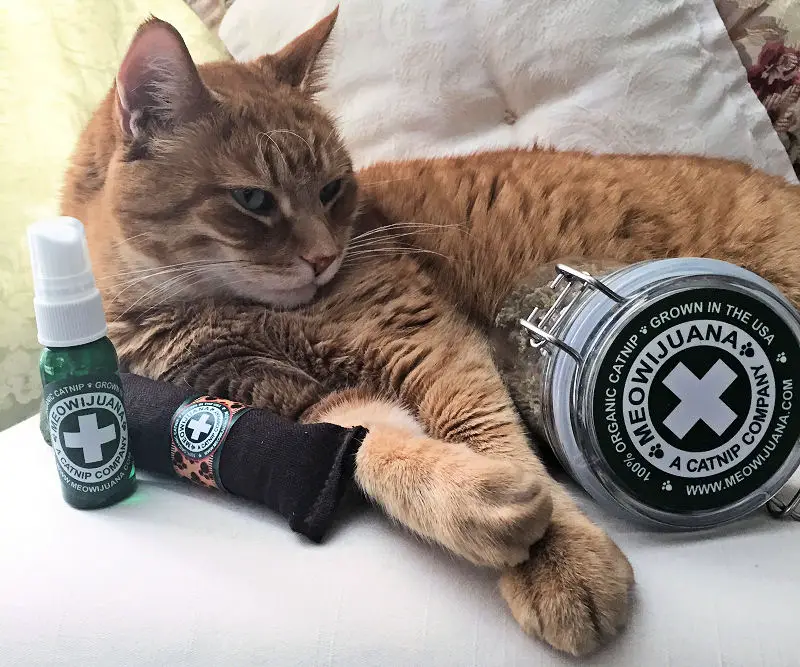
Summary
Here’s a cute little infographic called ‘A Guide to Understanding Catnip’ that nicely summarizes why cats love their ‘nip!

Credit: The above infograph was sourced from catnipsum.com
Drop us a comment in the “Leave a Reply” section below if you’ve ever had a funny or interesting experience when your cat had Catnip.

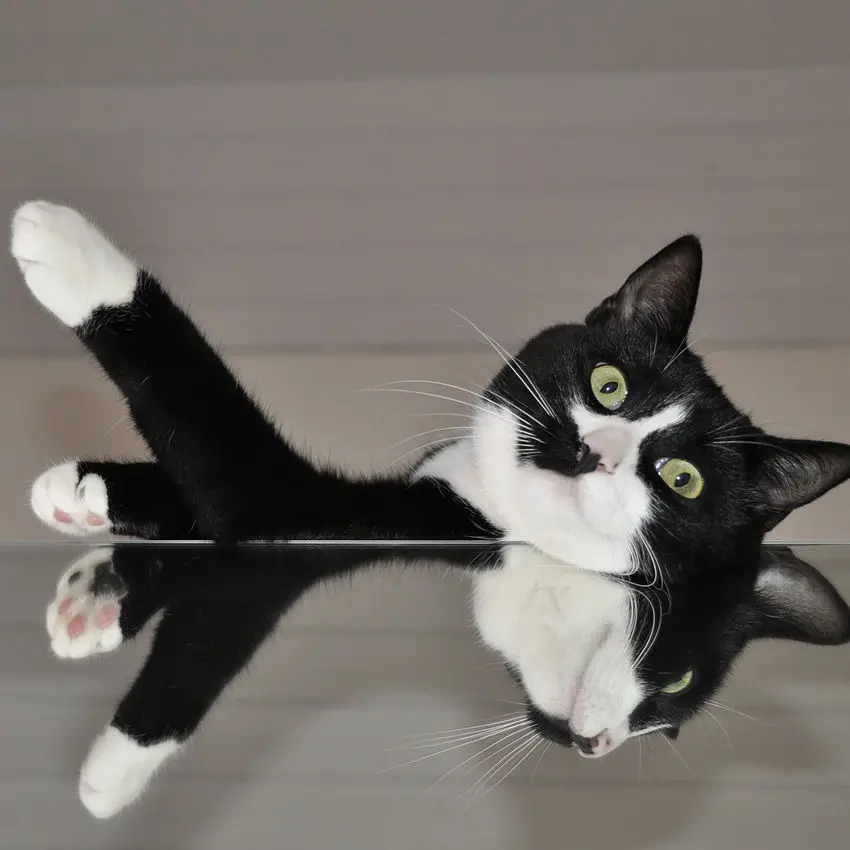
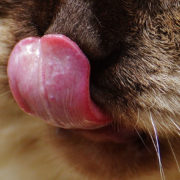

We have 3 cats. One goes bananas with catnip, one falls asleep and the other one has no interest.
Can you mix it in their food?
What a wonderful post! Cats, the feline personalities are different from each other. They vary in shapes and sizes and can be loyal, playful, sassy, and aloof. The friendliest of the cats can frown and run away from anybody or be extra endearing to get those extra cuddles.